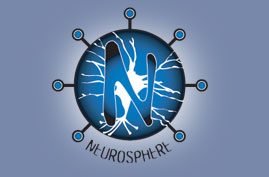Z-Wave
Network Infrastructure for the Neurosphere
I’ve covered Zigbee in past postings. Z-Wave is a competing standard (actually, a proprietary approach) that allows a user to discover Z-wave-enabled controllers around the home. At the recent CEDIA expo of high end consumer electronics, I saw Z-wave lighting (controllers inside the face plate for the wall switch), thermostats, garage door openers and window shades. (I’ve been manually opening and shutting shades over the course of summer days trying to keep air conditioning needs lower – automation would make a big difference.) There are systems that allow the user to open the garage door which signals a pre-set of other settings – heating, lighting – to turn on when you get home. Other systems allow remote Web access to your home controls (don’t give out the password!) I especially like the “self-organizing” bit in this material.
“Zensys is a leading provider of wireless networking technology for control and status reading applications. Our Z-Wave™ technology is an RF based, two-way; mesh network, communications protocol that enables everyday devices to be controlled and monitored wirelessly. Zensys offers a family of low-cost, low-power, integrated MCU/Transceiver chips embedded with Z-Wave, as well as a suite of development tools and services making it easy for companies to develop wireless products for residential and light commercial applications including lighting and appliance control, energy management, access control, security, and building automation.
Z-wave is self-organizing – each node discovers each other, self-healing by routing around dead spots. Each node does not store topology information – important in a network w scarce resources.
Is command – based – requires short acquisition time.”
www.z-wavealliance.org
